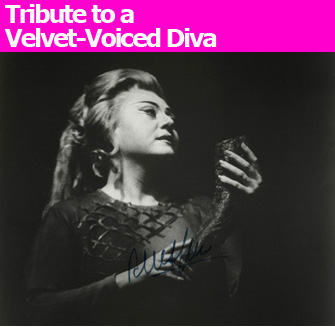 |
|
Régine Crespin in Die Walküre at the Palais Garnier, Paris, 1971. Photo: Roger Pic/BNF |
Régine Crespin and I go back a long way. At the age of 17, I listened obsessively to LPs of her incarnation of the Marschallin in Georg Solti’s recording of Richard …
 |
|
Régine Crespin in Die Walküre at the Palais Garnier, Paris, 1971. Photo: Roger Pic/BNF |
Régine Crespin and I go back a long way. At the age of 17, I listened obsessively to LPs of her incarnation of the Marschallin in Georg Solti’s recording of Richard Strauss’s Der Rosenkavalier. A few years later I very nearly came to blows with two Dominican monks who felt that Elisabeth Schwarzkopf’s (to my ears unbearably mannered) interpretation of the same role was better than Crespin’s, but that’s another story. Suffice it to say that, even though I neither met nor heard the diva live, I have always been grateful to her for playing such a huge part in my musical upbringing.
It is entirely appropriate that, to celebrate Crespin’s life and career, the Opéra de Paris has put on an exhibition, “Hommage à Régine Crespin,” at the Palais Garnier, the scene of many of her triumphs. Born in Marseilles and brought up in Nîmes, she spent most of her life in Paris, right up to her death in 2007. This exhibition, co-produced with the Bibliothèque Nationale de France, brings together a large number of documents, photos and theatrical costumes relating to Crespin’s childhood, singing career and later role as a teacher.
Although we are given precious little insight into her private life (her 11-year marriage to the German literature professor Lou Bruder is more or less airbrushed out of this show), it is fascinating to read newspaper cuttings about her early career in provincial opera houses and to marvel at the sumptuous costumes worn by her in her astonishingly diverse operatic roles from the French, German and Italian repertoire. I particularly enjoyed reading letters written to her by some of the great names in music, from Otto Klemperer’s rather forbidding and curt instructions to Solti’s request (written in almost impeccable French) that she teach a technically deficient but promising young soprano.
The one great pity about this exhibition is that we do not get to hear enough of the sumptuous velvety voice that made her such a star. Film clips of her singing are shown in one section, but the sound is at such a low level that we don’t get the chance to be overwhelmed by the sheer beauty of her singing.
A ticket to the exhibition entitles you to visit the Palais Garnier as well, and a book of photos has been produced to coincide with the show. But to really immerse yourself in the full Crespin experience, I urge you to listen to some of her many recordings, especially her rendition of Berlioz’s Les Nuits d’Été, and, of course, her performance in Solti’s Rosenkavalier – well worth a fight with obstreperous Dominican monks.
Opéra National de Paris: Palais Garnier, corner of Rue Scribe and Rue Auber, 75009 Paris. Tel.: 08 92 89 90 90 (+33 1 72 29 35 35 from abroad). Through August 15. Open Monday-Saturday, 10:30am-6:30pm. Admission €9 (includes tour of Palais Garnier). www.operadeparis.fr
Support Paris Update by ordering music recorded by Régine Crespin from Paris Update’s Amazon store at no extra cost. Click on your preferred Amazon location: U.K., France, U.S.
Buy other music and books from the Paris Update store: U.K., France, U.S.
Reader Reaction: Click here to respond to this article (your response may be published on this page and is subject to editing).
© 2010 Paris Update
Favorite